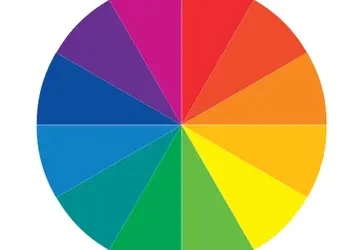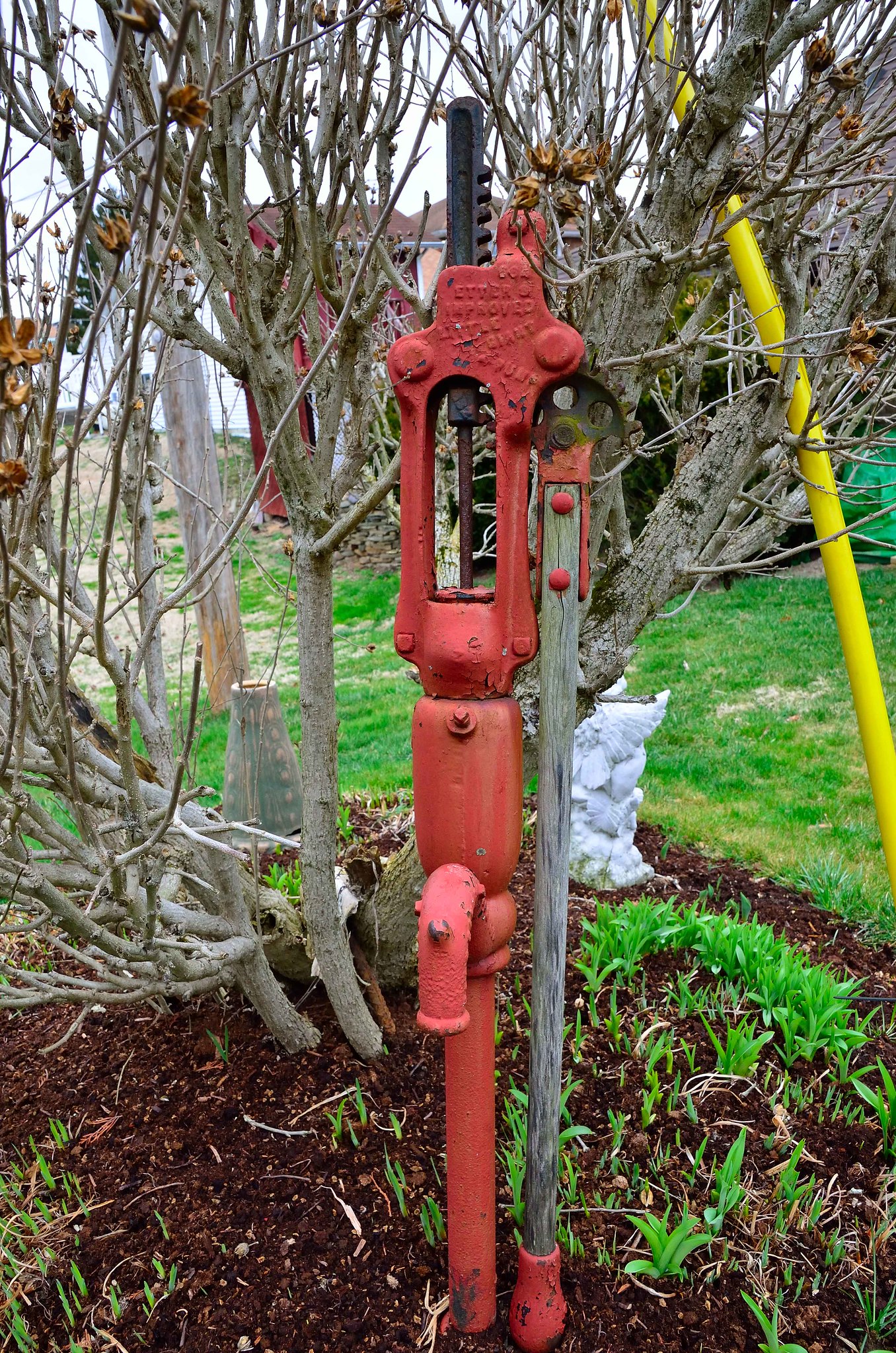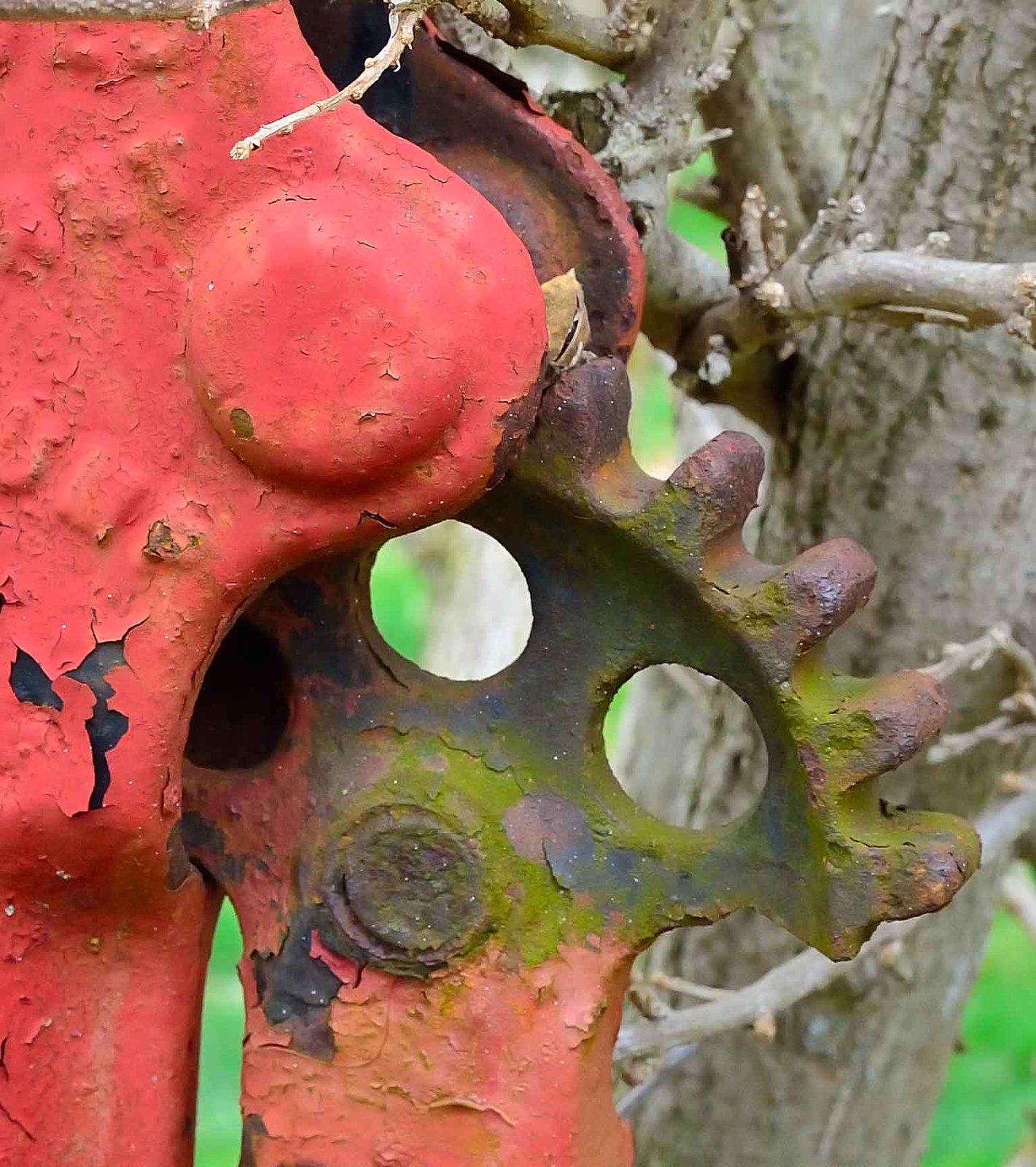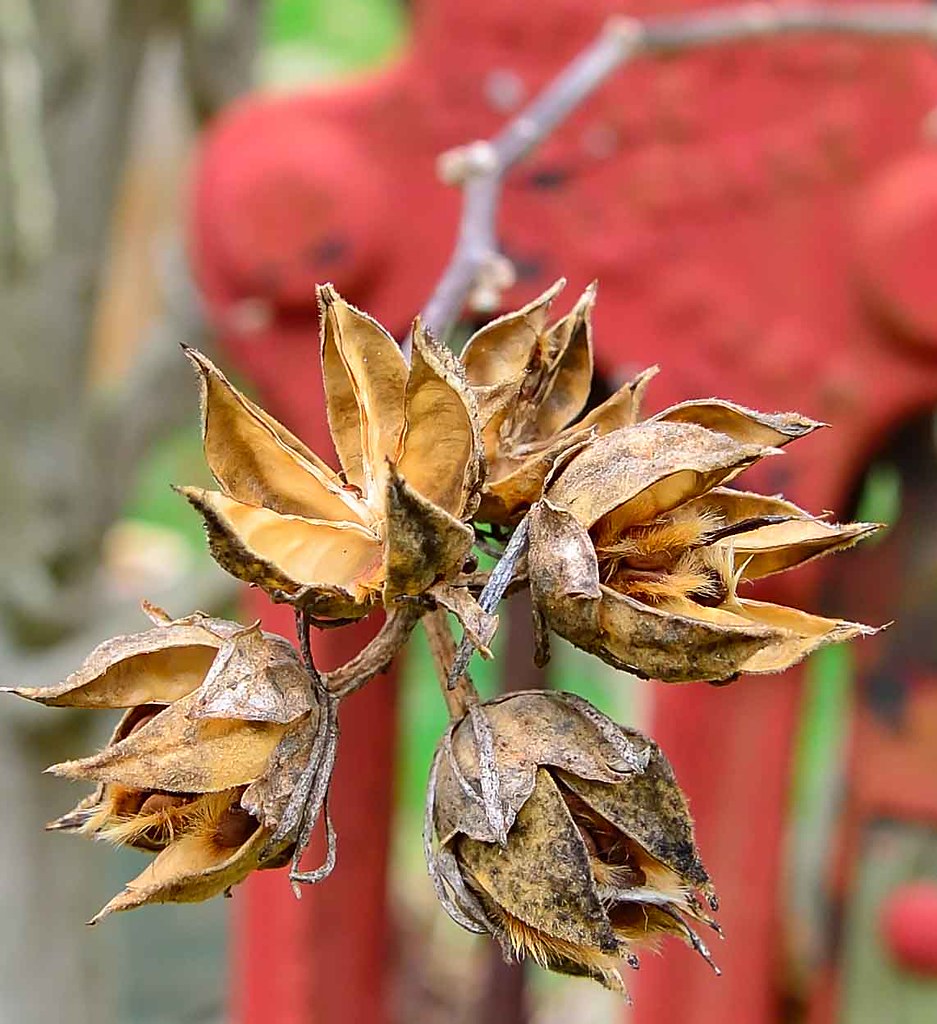@greybeard not quite sure where you're going with this, but your edit reinforced my earlier comment. You see the difference in how the focus point (the seeds) now stand out from the background?
To understand my comments you need to consider color harmony, not in the RGB world of photography, but in how they relate to each other in a color wheel, I'm digging back to my old design classes now.

There are three "primary colors" Red, Blue and Yellow on the above wheel. They are equally spaced around the wheel and you can't make a pure version of them by mixing any other color. Mixtures of the "primaries" form the other pure colors. Thanks to the way the eye perceives colors, all of pure colors have dominance in a scene, with the primary colors being at the top of the very top of the dominance scale. Dominant colors will always "push through" even if they are in the background, as it did in your first image.
The edit while eliminating the dominant red, now lacks "harmony". This is one of the simplest explanations of the basic color schemes I've seen.
Color Harmonies: complementary, analogous, triadic color schemes
In your first pick a "Complimentary" scheme with the seeds as the primary focus point would have needed background colors in the blue quadrant. An "Analogous" scheme would only work if the seeds had been red, because if it's in the background - it's coming forward on it's own. A "Triad" scheme with the seed pods as the focus would have worked well with backgrounds lavender/turquoise, and so on through the various schemes. In addition to the basics there are variations, but they tie back to the basics.
In photography unlike painting you don't always get to pick the colors. Sometimes you can move, get a different angle, use a different DOF, change the background contrast or luminosity. In other words anything that will diminish the dominance of that color, or shift dominance to your primary focus point. I did a quick selective edit on the background tint, saturation, and luminosity. Never touched your seed pods, but you see how they moved more toward the yellow, and have become dominant. Still needs works, but you can see the difference it's more what I would classify as Analogous (same quadrant).
 OLD PUMP_ by TOM STRAIGHT, on Flickr
OLD PUMP_ by TOM STRAIGHT, on Flickr OLD PUMP GEAR by TOM STRAIGHT, on Flickr
OLD PUMP GEAR by TOM STRAIGHT, on Flickr SEEDS IN FRONT OF OLD PUMP_ by TOM STRAIGHT, on Flickr
SEEDS IN FRONT OF OLD PUMP_ by TOM STRAIGHT, on Flickr

 SEEDS IN FRONT OF OLD PUMP_-3
SEEDS IN FRONT OF OLD PUMP_-3











